|
|||
|
Privacy Policy | Join the Association | List of Members | Print this page |
|||
|
Figuratively Speaking.
Frank Alley. |
|||
|
Transfer to the Engineering Branch.
A couple of issues ago I
mentioned that I had transferred from the Education to Engineering. I was
the first education officer in the RAAF to ever transfer to the
engineering branch as a radio officer. A few years later, another EdO,
Richard Jones did the same. Richard had completed the first year of a
science degree at the University of WA before he joined the RAAF as an
EdO. When he transferred to be a RadO the RAAF sent him off to RMIT in
Melbourne to complete a diploma in radio engineering. I was later to meet
Richard again when he was a Sqn Ldr at RAAF Richmond. I contacted Richard
when I was having trouble with a neighbour’s tenant, a RAAF airfield
defence guard who in effect threatened me with a gun. The guy turned out
to be a loony who
I also mentioned in the last
column the case of some do-gooder spreading the word that I was a
communist. I
learned this during the period of the Radio Officers’ Familiarisation
Course held at Radschool. One of my former students stopped me in the
street in Radschool and seemed a bit agitated, if not upset. He told me
that the service police had pulled him in and interrogated him with
questions about me and my loyalty. The poor young fellow was concerned he
might have said the wrong thing. I assured him not to worry, but was
furious that the SP’s had been so incompetent and unprofessional in
matters in which they had no training nor authority. I went straight to
the Radschool SAO and lodged a formal complaint and demanded an
investigation. Well all you could really hear was the sound of heads
ducking.
Having an upgrade to my security clearance was a problem in that on the RadO’s course I would have to see and learn things that were highly classified. As you will understand, knowing things that are sensitive can be a burden on the mind. The more you know, the less you can talk and you start to feel a bit isolated. I had to do a course on communications security, but first we were to have a look at Defence Signals Establishment (DSE) in Melbourne, perhaps one of the most secret places in the country at that time. |
|||
|
In the meantime I was
rostered on as Orderly Officer the Saturday of the final regular RAAF
flying display. It was
You will remember that we had
RAAF and Army in Viet Nam at the time. In an act I can only see as
provocation, the RAAF display organisers built a ‘Vietnamese village’ on
the airfield and to the commentary of a jingoistic
|
|||
|
The right to bear arms is only slightly less ludicrous than the right to arm bears
|
|||
|
The RAAF guard dog handlers had been called out from watching an Australian Rules game and they were dirty. There was at least a company of army troops with loaded SLR’s just wanting to shoot someone. (A similar attitude was displayed later by the Chinese soldiers at Tiananmen Square in Beijing in 1989). The officer in charge of the display expressed utter contempt for university students. It was simply the most frightening night of my life. Luckily the uni students were intercepted and did not get on to the airfield. At 8.00, I most happily, and with much relief, handed over the OO’s armband to the next guy with wishes of good luck.
Suddenly I felt disturbed; there was a guy standing just 10 yards from me and his face was too familiar. He was watching me. I suspected he was an ASIO agent and he knew I had sprung him. I glared at him because I realised he had been following me for perhaps a week or so. He nodded to me in acknowledgement. For heaven’s sake, he even looked like a spy. Curiously, my security clearance came through the following week.
|
|||
|
A 2007 study found that the average Australian walks about 900 miles a year. Another study found that Australians drink an average of 22 gallons of beer a year. That means on average, Australians get about 41 miles per gallon. That's pretty good economy - don't you think!!!
|
|||
|
I was told my upgraded security clearance had been approved outside the green door at DSE. I had refused to go in because I didn’t want to see anything I wasn’t cleared to see. To this day I cannot remember what was behind that green door. At Laverton we did the communications security course. Another green door and you don’t get in unless the guy behind it knows you are cleared. They have axes in the place, so the machinery can be destroyed before anyone not cleared can get to see them, such as firemen during a blaze in the building. I can talk about it now because it was so long ago and the coding systems are now so much more sophisticated. But the machines upon which western military communications depended on were in that room. We were taught to use machines not unlike the Enigma coding machines used by the Germans during WWII. The code name for the machines reduced my everyday vocabulary by at least one word.
The main machine however was a big lump of a computer, which used Fibonacci sequences. Yes, you have heard of them in the ‘DaVinci Code’. We were shown films of Russian spies operating in Sydney and one of their drop-off points, which was near one of the pylons of the Sydney Harbour Bridge. Years later I went to have a look and it was still there. They taught us about techniques used by the Russians to ‘talent scout’ and even blackmail the target. So bugger it, if I was out on a job and in a hotel room, I was to reject to advances of any gorgeous blonde who might want to come into my room! Ah, war is hell. We were also told that once we had successfully finished the course we would have OFFTRAC written on our files and we were assured that the bloody Russians would somehow have access to those files and they would know! What had I got myself into?
We did get to visit a lot of
units such as the transmitting and receiving stations at Londonderry and
Marsden Park. We were driven from Richmond to Brookvale in a hire car
‘piloted’ by a Lebanese guy who entertained
|
|||
|
How do you get a sweet 80-year-old lady to say the "F" word?
Get another sweet little 80-year-old lady to yell 'BINGO'!
The US navy had flown in and
the aircraft captain showed us over the plane and even started up the
engines so all the gear could be run. He was a generous soul and I’m sure
that with the faintest hint he would have taken us for a flight. What a
difference in comfort compared to the Neptune. There was no main spar that
had to be
ARDU, RESDEVU, depends on who was the CO. At the time it was Gp Capt Graney, a huge white-headed man, pilot. Now ARDU has the record of being the only unit in the RAAF to stage a mutiny! In the late 50’s there was a problem with the ejection sequence in the Sabres. When the pilot pulled the ejection handles on either side of the seat, the canopy slid back too late and took the pilot’s head off as the seat came out. So they eventually invented the explosive bolt that blew the canopy to bits and the seat with pilot went through the bits. Apparently the technicians were worked overtime too much during the solving of the problem and got a bit disgruntled. They got together and decided to disobey an order en-mass. On the unit parade, the CO at the time gave the order to ‘right turn’ and there they stood, with shouldered arms (303’s) and didn’t move. The CO looked at them and told them rather loudly apparently ‘well you can all get f…..ed and stay there’. And so they did. Finally the CO came back out, they had a chat and peace prevailed.
In a building across the road
from the hangars, high on a wall, was a bit of charred recording graph
paper. It is all that was left from the first Mirage (A3-1) (Picture of
A3-1 below) that crashed in December 1964. The
My job at ARDU was in 3 parts. I had 2 projects and flogging around in specially fitted out DC-3’s doing flight performance testing of radio communications and navigations aids such as GCA, CADF, NDB, TACAN and ILS. I spend most of my time on the flying job or calibration. Some of you might remember that at about lunchtime a Mirage would break the sound barrier near Laverton. One day I was up in a Gooney and saw him coming, a closing speed of over 800 mph, fantastic. One project was to design and build a power supply for a computer in Darwin with the requirements that it be tropics proofed and that there be no measurable change in input current. Electric keyboards do radiate small pulses of EM radiation when the keys are pressed and a spy with a radio receiver can detect when messages are being typed, a break in security. That turned out to be successful even though I had to wait forever for some crucial parts.
|
|||
|
|||
|
Another project involved the Mirage. It had a Bendix RADAR altimeter and the horns on the end of the waveguides were fitted just behind the cockpit air-conditioning outlets. The horns were covered with fibreglass panels, which after flights was shown to be bulging. We made up a dummy antenna cover, put in a thermistor attached to a recorder and the aircraft went aloft with much other recording going on. The graphs showed that the plane had gone supersonic in a 45 degree climb. At 50,000 feet where the air temperature is below minus 50 degrees Celsius, it was 1000C at the leading edges and the antenna covers were 800C (centigrade those days). A bit over a year ago I visited Fighter World at Williamtown and immediately got under a Mirage and noted that they weren’t using fibreglass anymore.
These are a few photos of the aircraft I flew in on calibration jobs, A65-78, A65-86, A65-95 and A65-114. One of them was a real mongrel and I can’t believe that it is still flying. A65-95 had been given a C-service and I am sure that gremlins were hard-wired into the thing. If anything could go wrong with this awful aeroplane, it did! If it was allocated to you for a job, your heart sank because you knew you were in for trouble, even before you took off sometimes. I’ll outline one job, which turned out to be a fiasco.
|
|||
|
|
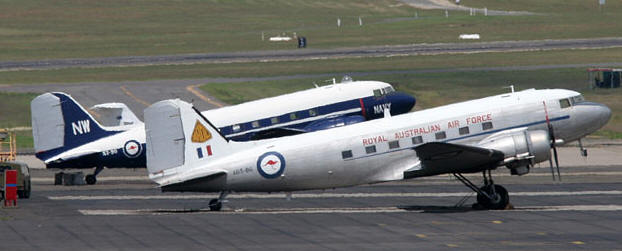 |
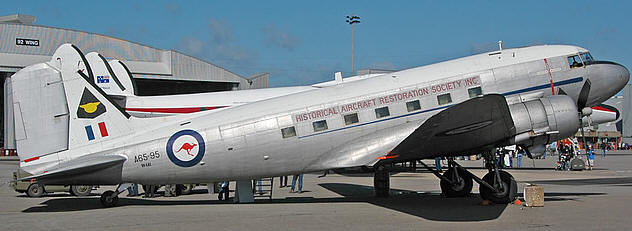 |
|
|
We were to calibrate the gear at Williamtown, but on the way we had a quick job to do at Richmond. Well, doors closed, engines running at Laverton, VHF sets fails. Engines off, VHF set replaced. We always to carried 2 of these, guess why. Doors closed, engines running, take off, pilot says to navigator ‘do you remember taking the pins out of the undercarriage?’ Land. Eventually get to Richmond….late. Do the job flying around Richmond. Land. Do what has to be done. Go back to 95, drip, drip, drip, hydraulic fluid forming a pool. Fixed. Get aboard, doors close, engines start, alternator fails. Get out, Christmas tree some other plane. Fixed. Get to Williamtown 10pm, tired, fed up, hungry. Had sandwiches in the kitchen in the airmen’s mess. Next morning taxi out to take off, have to wait, Mirages taking off. Everything stops, VHF set fails. The other VHF set fails. Rely on UHF. Get going, get targeted by Mirages and the leader actually said, just like in the movies ‘Tally ho boys!’. Long hours doing a 60 mile radius orbit. Land.
Next day doing GCA approach measurements, sitting back not being able to see anything but instruments, plane bouncing all over the place, I get airsick. No, we couldn’t stop the thing so I could get out and have a spew. Can’t chunder on the floor, will get into the control lines, put up with it. Pilot gets me some airsick tablets after we land. Feel miserable. Pilot gets a backseat ride in a Mirage. ‘What was it like Bill?’ ‘Better than sex’ he replies. I still feel miserable. Pilot decides to take the plane back to Richmond for something. On the way back to Williamtown while changing radio channels, the selector box comes apart and ball bearings roll down his sleeve. Pilot really annoyed. Frank told to go back to Laverton with the thing, which now has a communications escort plane with us, sent up from Laverton. Land at Laverton wanting to set fire to the mongrel. Did get some good measurements done though and found out how superior the Sydney civilian controllers were to those in Melbourne. On our way out on the long orbit the controllers says ‘Calibrator 2 report when you have reached your orbit position’. So out we continue, pilot banks the plane to turn, controller calls up ‘Calibrator 2, confirm you are now turning’.
|
|||
|
A successful man is one who makes more money than his wife can spend. A successful woman is one who can find such a man.
|
|||
|
Some time before I was on a job with Kevin Sharpley as pilot. Kevin was not long back from Viet Nam where he had flown helicopters. He was one of the pilots at the battle of Long Tan. We were heading to East Sale, it’s stormy and Daks are prone to lightning strike. But we press on and Kevin calls me up and says, ‘Frank, come up here and have a look at this’. So I go to the flight deck, look forward and to my consternation there is a DC4 heading straight at us, same altitude, same radial, but opposite direction. Kevin drifts the plane to port. Melbourne controller calls up in panic ‘Calibrator 2, make left turn now!’ Kevin replies ‘Melbourne, this is Calibrator 2, I have him visual’. As cool as you like. The DC4 never saw us. Missed by less than 100 yards and I heard his 4 engines over the noise of ours. Lightning in front. OK, that’s enough risk for one day, let’s go home.
On a couple of occasions over Avalon I was able to show Kevin something. ‘Kevin, can you see the Boeing?’ ‘No, where is it?’ ‘It’s just beneath us and ascending!’ Another time, ‘Kevin, should there be a cleaning rag hanging out of the starboard engine exhaust?’ Puts plane on auto pilot, comes back, looks out the window at the offending rag. ‘No’. Cool as a cucumber, but I did see him concerned if not scared twice. On one occasion we had to fly 50 feet above a trig point in the Dandenongs. There was a standing wave in the air, which of course you cannot see. It caught us and flung the plane at the ground. I guess we missed the top of the hill by less than 20 feet. There was utter silence on intercom and then finally a long, deep tortured intake of air from Kevin as I picked myself up off the floor having first hit the ceiling.
|
|||
|
To be happy with a man, you must understand him a lot and love him a little.
To be happy with a woman, you must love her a lot and not try to understand her at all.
|
|||
|
Canberra in winter is a miserable cold place, a fitting place for politicians. The navigator for this job was Flt Lt (Flash) Gordon Blair. Pilot Kevin Sharpley. Freezing day, don’t touch the inside surfaces of the aircraft with bare skin. Take off, ground crew waiting for communications. Soon all we could see was grey. Grey everywhere and the decision was to divert to Uranquinty, but that turned out to be fogged in and had little by way of landing assistance. Pilot decides to fly down the Cooma valley, mountains to the left, mountains to the right. Ground crew wants to know where we are. I have no bloody idea. Clattering sound on the sides of the plane. Ice flying off the props. Ice on the wings. Ice breakers put into operation. Pilot keen to fly down Cooma Valley, navigator doesn’t want to. Pilot and navigator argue. Deeper into the valley, ice still flying off the props. Navigator now keen to keep going down the valley. Pilot and navigator argue. Frank stands behind them helpless. I’m going to die and this time I can see it coming. Finally pilot applies full power and climbs out of the valley. Where to go? All nearby airports are fogged in. They decide to do an instrument landing at Canberra. Law says you need 2 pilots to do an instrument landing. Frank looks on. They decide to break the law. Make an ILS approach to Canberra, Flash asks for high intensity lighting, pilot concentrating. There they were, those lovely lights! Land. Safe!
During that job I spent some
time in the control tower and saw Indira Ghandi being farewelled by John
Gorton. She was to fly out on a BAC-111. Canberra airport has one runway,
one heading into the mountains and the
I also saw Gp Capt Graney make 2 attempts to take off in a Canberra bomber and to finally put the boot into the plane before he stormed off. I assume the plane learned its lesson!
On the return trip to Laverton we flew into a head wind of at least 80 knots. The DC-3’s cruising speed was 134 knots, which in this flight gave us a ground speed of maybe 60 knots. It was a long trip back to Laverton, but nevertheless beautiful. It was a full moon night, we cruised at 8,000 feet and the tops of the clouds we just below. It lives in the memory of flying at cloud top altitude in full moonlight.
As much as I admired the skill and sometime professionalism of the RAAF pilots, I was a bit concerned about their self-importance at times (me too – tb). One reminded me of how he held my life in his hands after a discussion about how little RAAF pilots were paid compared to commercial pilots. Indeed he did. Sometimes they would do things well over the top. Yes, they got flying pay and guys like me, flying as many hours as many aircrew, got nothing. But I wasn’t wearing any wings.
Bill Fewster had flown Neptunes and was used to flying low over water. On one flight back from Launceston I felt the aircraft descending, went up to the flight deck and looked forward. The water seemed to be level with my eyes and the altimeter was reading minus something. We waved up to the deck of a ship we flew past
(Altimeters work by
registering differing air pressures. Before take off, the pilot is given
the local barometric pressure (called the QNH) and he sets that into his
altimeter which should then read the altitude above sea level of the
departing airport. (The QFE, on the other hand, is the reading that when
entered into the altimeter, usually while at the runway threshold, will cause it to read zero, regardless of the altitude of the
aircraft above sea level). As the aircraft ascends, the air pressure
decreases and the altimeter registers height. While on route, the aircraft
will pass through differing atmospheric pressures, but instead of
continuously entering local QNH’s into the instrument, the pilot is given
what is called the “Area QNH” which is an average of all local QNH’s for
the “area” in which he is flying. This is worked out by the Met blokes and
relayed to the pilot by ATC. In some cases, the Area QNH could be less
than the local QNH – which means the aircraft ‘could’ register a negative
altitude – if the pilot was dumb enough to fly low enough. Above 10,000ft,
all aircraft use a QNH of 1013mb, regardless – tb)
On one flight back from East Sale we carried a civilian psychologist. Bill put him into the left hand seat. Flash Blair in the right hand seat. Bill stands behind the throttles with a smirk on his face and quietly shuts down the port engine. Plane banks left, falls out of the sky, Flash restarts the engine, gets control of the plane. Psychologist terrified. On approach to Laverton and descending, the psychologist is looking at me, eyes like saucers, screaming. His ears are blocked, from the fright he had. Frank advised pilot to bring us down slowly or we will destroy this man’s hearing.
|
|||
|
A married man should immediately forget his mistakes, there's no use in two people remembering the same thing.
|
|||
|
Kevin and I are out on a job, Bill knows it and is in a Vampire. Kevin flies at 300 feet. Bill comes up from below and ‘attacks’ us. Kevin flings the DC-3 around the sky while I’m looking out the windows trying to find the direction of the next attack. Kevin decides we better stop in case we break a wing off. It was very exciting and I began to understand how aircrew over Europe could get through the fear they must have felt. During such activity there is no time for fear, there is just noise, violence and g-forces. On his last landing at Laverton, Bill reassured me that something was about to happen, but ‘don’t worry Frank, everything is under control’. Great! So Bill makes a normal approach, then calls up a request to abort the landing which is always agreed to by the controller. Wheels and flaps up, Bill banks the aircraft at 90 degrees and flies straight at the control tower. Frank is standing horizontally and watches the control tower flash past his head. Bill’s preferred dream as a pilot was to fly Mustangs in a ground attack role. I last saw Bill Fewster on TV having flown the first plane (Hercules) into Darwin after cyclone Tracy.
There was often disagreement between the engineers and pilots over use of aircraft at ARDU. We came to an agreement that if an aircraft was allocated for a calibration job, it was to be left alone until preparations were completed. I had a plane allocated, Jeff decided to take it before it had been prepared for calibration. I had a go at Jeff and was hauled over the coals by Bill Fewster in the crew room, but decided to stand up to the pilots club and the matter was settled. Jeff had obviously had a whinge to Bill. Clearly, I didn’t know my place. Later I was due to fly with Jeff in a Vampire and was instructed in the use of the ejector seat, just a bit scary in such a small cockpit. For reason I can’t remember, the flight was cancelled.
ARDU had Sabres to play with
back then. Dick Whitman, quite a renowned pilot with the RAAF, managed to
Speaking of wheels up. It
became SOP that when final clearance was given to land the controller
would say for
|
|||
|
A woman always has the last word in any argument. Anything a man says after that is the beginning of a new argument.
|
|||
|
I remember walking towards an open hangar door at ARDU one day and as I reached the door ‘BANG…whirrrrr’. Frightened hell out of me, but that didn’t compare with the poor technician standing in the cockpit. He was white and frozen. Someone had left the start switch engaged and when main power was turned on the big cartridge fired and turned the engine over. I always had trouble walking past that hangar door after that.
One of the ARDU airmen was killed in a car accident and the RAAF, as usual, advised the family to let the RAAF handle the funeral. I was chosen as the officer for the guard of honour. Then followed a week of rehearsals. The day itself was perfect for a funeral, cool with light drizzle. I was in 1-A’s, gloves and carrying a sword. The troops had SLR’s and bayonets. It went perfectly and at the graveside the troops fired 3 volleys into the air. ‘Load, present, fire’. BANG and the poor family nearly fell into the grave. The RAAF always did a great job in such circumstances.
The techos amongst you will
be interested in a discovery I made in the attic of one ARDU building. In
the early
At ARDU, I found the test
pilots to be a very professional lot and were of a rather serious nature.
We heard that a Mirage had flame-out over Melbourne and rather than lose
the plane, the pilot who was down from Williamtown, decided to land it in
a park or open field. I thought that Mirages had high pressure tyres for
hard runway surfaces. Anyway, it seems that they couldn’t find a way to
get the thing out and it was decided to fly it out! I knew the test pilot
who was to do the job, which was to be on the Friday. I watched
Years later I was teaching at Colo High School, on the western outskirts of Sydney, not far from RAAF Richmond. The school librarian, Michael ….. was the brother of a fighter pilot who had the distinction of successfully banging out of two Mirages. In those days, senior teachers were invited to submit their own HSC courses to the NSW Board of Studies. These courses were called Other Approved Studies. I ran courses in Electronics and Photography. Michael decided to write a course called Peace Studies. He wanted to send his draft of the course to the OC, RAAF Richmond as a sort of provocation. After he told me that military people had simple views, I warned him not to be so sure and to be careful that military people might know more about peace than civilians. Some weeks later he showed me the results of his course being sent to Richmond. The OC had apparently handed the draft to his executive officer, who happened to have a PhD in Peace Studies from Harvard University. The draft looked like it was bleeding from all the red pen ink on it! Well, he was warned!
|
|||
|
A female ferret will die if it goes into heat and cannot find a mate.
|
|||
|
My younger brother, Trevor, joined the RAAF to become a clerk. At one stage he was at CPE (Central Photographic Establishment) at Laverton, I think as a corporal. He was later commissioned and was with the airfield defence guards at Richmond. Trevor used to tell everyone who would listen, tongue in cheek of course, that he was a ‘trained killer’. The trained killers were on an exercise up north and on their way back, stayed overnight in a motel on the north coast of NSW somewhere. Next morning they set out for their trip back to Richmond and after some time, realised that they had left their weapons at the motel! Entrance qualifications? Anyway, one of the defenders had the nickname ‘Boof’. Now, I know you don’t believe that. But he was never allowed live ammunition on the firing range. Trevor had told me about him. I was teaching at Mitchell High School in Blacktown and one afternoon a rushed out of the staff room on my way somewhere and some young guy, who clearly wasn’t one of our students jumped to attention and said ‘Sir!’ Now really, I had given up being a ‘sir’ two decades before. Anyway, it turned out to be ‘Boof’ who apparently had been kicked in the head by a horse when he was a kid. He was visiting some friends at the school. Small world.
Trevor is now a Sqd Ldr
AdminO on contract with the RAAF at Williamtown. Years ago I visited
Trevor at the
Speaking of defenders…. Henry Parker, Flt. Lt. Henry Parker, tall, wearing big boots, purple-red face, only officer in the RAAF permitted to wear army uniform. The stuff of the Empire! I did a defenders’ course with him and got quite grumpy when he pinched the breach block out of my SLR when I had left it, amongst its friends, for maybe 30 seconds. He gave it back after I got an ear-bashing! In the mess he told his stories of when he was in the western desert with Montgomery’s 8th Army. When they came upon German pill boxes, the drill was to throw in grenades and kill them outright. But not Henry, he wanted to make it personal. He would throw in dummy grenades and personally shoot each German soldier on exit with his Webley 45. He complained to me that sometimes the bullets would just go straight through the German who would keep running!
Now, I ask you, where does an ordinary school teacher get to have experiences like I had in my 4 years in the RAAF? And maybe I do regret that I left the RAAF. I am currently tutoring a young lass who is studying Physics for her HSC. She has decided that she wants to become a pilot in the RAAF, preferably a fighter pilot. I will of course encourage her, because where could she get better training and experience?
|
|||
|
The very first bomb dropped by the Allies on Berlin in World War II killed the only elephant in the Berlin Zoo.
|
|||
|
Back Go to page: 1 2 3 4 5 6 7 8 9 10 11 12 13 14 15 16 17 18 Forward |
|||
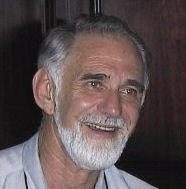
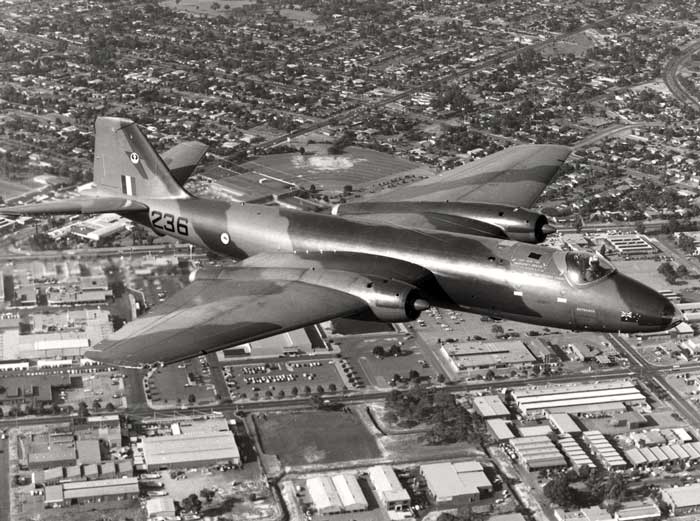
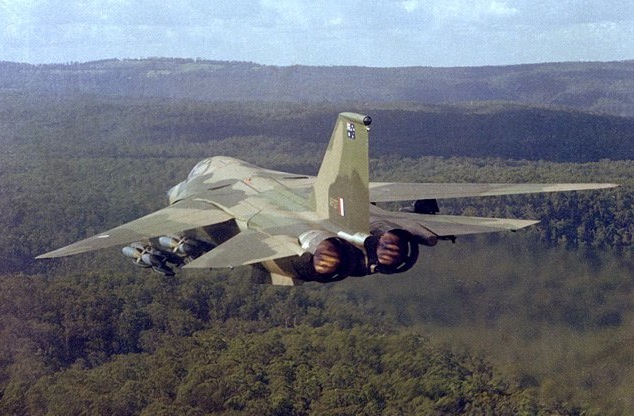
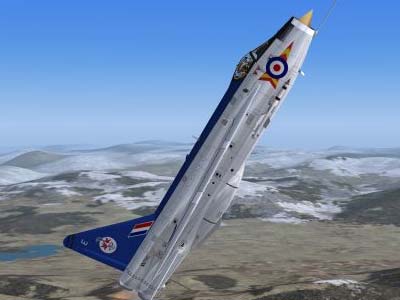
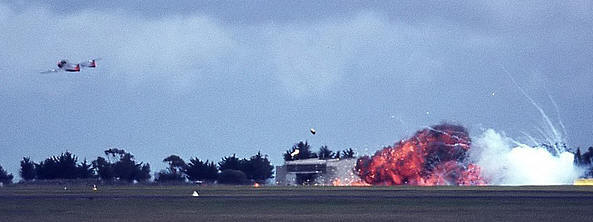 guy in the control
tower proceeded to strafe, bomb and napalm the ‘village’. That was to
cause me a lot of trouble during the night as orderly officer. All night I
received telegrams of condemnation from all over Australia. We had a tip
off that Melbourne University students planned to sit on the napalm site
for the Sunday display. The pilot of the aircraft doing the bombing (no
names no pack drill) was thrilled at the thought of bombing some
protesting students. That same pilot is said to have got himself posted to
Viet Nam for a week so he could go and do some bombing.
guy in the control
tower proceeded to strafe, bomb and napalm the ‘village’. That was to
cause me a lot of trouble during the night as orderly officer. All night I
received telegrams of condemnation from all over Australia. We had a tip
off that Melbourne University students planned to sit on the napalm site
for the Sunday display. The pilot of the aircraft doing the bombing (no
names no pack drill) was thrilled at the thought of bombing some
protesting students. That same pilot is said to have got himself posted to
Viet Nam for a week so he could go and do some bombing. 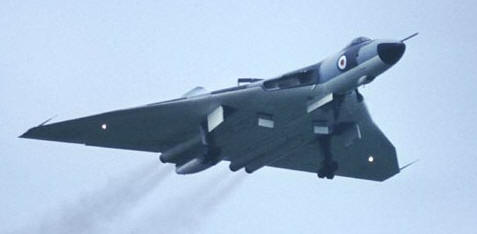 During
the flying display, which I always enjoyed, I found myself amongst the
crowd. Remember the Avro Vulcan on base finals, looking like a giant
stingray in the sky, getting bigger and bigger until with engines idling
it put its wheels on to the strip. Then full power was applied and I
remember the vibration in the ground as the thing climbed away like a
fighter. And away it went carrying its Blue Steel missile fitted with a
hydrogen bomb. It did a tight circuit showing its extraordinary
manoeuvrability, did a fly past with all the garbage out, slowly, so
slowly and then came back just subsonic to show how fast such a big thing
could go. That was also the day the Hercules did a short landing and blew
a tire. The plane seemed to limp!
During
the flying display, which I always enjoyed, I found myself amongst the
crowd. Remember the Avro Vulcan on base finals, looking like a giant
stingray in the sky, getting bigger and bigger until with engines idling
it put its wheels on to the strip. Then full power was applied and I
remember the vibration in the ground as the thing climbed away like a
fighter. And away it went carrying its Blue Steel missile fitted with a
hydrogen bomb. It did a tight circuit showing its extraordinary
manoeuvrability, did a fly past with all the garbage out, slowly, so
slowly and then came back just subsonic to show how fast such a big thing
could go. That was also the day the Hercules did a short landing and blew
a tire. The plane seemed to limp!.jpg) us all the way with dirty jokes. What a lovely posting Brookvale would
have been. I had been told stories of how Brookvale was to protect Sydney
from attack and Canberra bombers from Amberley would make sundry attempts
to get through, such as flying south on the western side of the Great
Dividing Ranges and hopping over and running into Sydney. A mobile RADAR
unit put paid to that. Some would fly at dot feet down the coastline
frightening fishermen on beaches. The trickiest perhaps was one pilot who
got under a Viscount airliner coming into Sydney and of course the two
aircraft would like one on RADAR those days. As (bad) luck would have it
there was a flight of Sabres out on a sweep and happened upon the
interloper who was promptly ‘attacked’. Imagine how the Viscount captain
felt having fighters swooping down on him. There was also the story of the
daily ‘light up a Viscount’ where the Bloodhound SAM unit at Williamtown
would target a north-bound Viscount each morning. While at Richmond we got
a sneak preview of the Neptune replacement, the P3 Orion.
us all the way with dirty jokes. What a lovely posting Brookvale would
have been. I had been told stories of how Brookvale was to protect Sydney
from attack and Canberra bombers from Amberley would make sundry attempts
to get through, such as flying south on the western side of the Great
Dividing Ranges and hopping over and running into Sydney. A mobile RADAR
unit put paid to that. Some would fly at dot feet down the coastline
frightening fishermen on beaches. The trickiest perhaps was one pilot who
got under a Viscount airliner coming into Sydney and of course the two
aircraft would like one on RADAR those days. As (bad) luck would have it
there was a flight of Sabres out on a sweep and happened upon the
interloper who was promptly ‘attacked’. Imagine how the Viscount captain
felt having fighters swooping down on him. There was also the story of the
daily ‘light up a Viscount’ where the Bloodhound SAM unit at Williamtown
would target a north-bound Viscount each morning. While at Richmond we got
a sneak preview of the Neptune replacement, the P3 Orion. 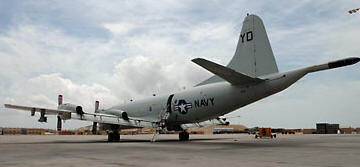
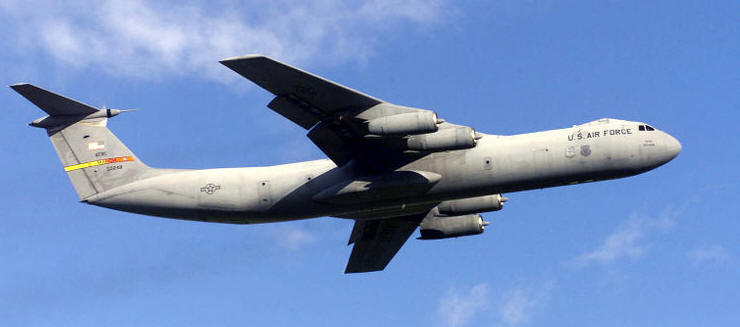 So,
off to ARDU. At DepAir in Russel Offices some Air Marshall gave us a burst
about how they carefully planned our careers, particularly with postings.
They posted me to ARDU from RADSL and the bloke I replaced at ARDU was
posted to my job at RADSL. Just a walk down the road.
So,
off to ARDU. At DepAir in Russel Offices some Air Marshall gave us a burst
about how they carefully planned our careers, particularly with postings.
They posted me to ARDU from RADSL and the bloke I replaced at ARDU was
posted to my job at RADSL. Just a walk down the road.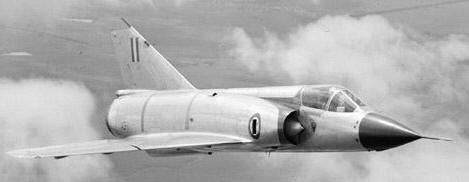 Mirage
has a tendency to rock back and forth and has a stabiliser to control
this. Sqn Ldr Tony Svensson, on loan from the RAF was the test pilot when
the stabiliser failed. He apparently was in a dive and tried to recover
the thing but almost too late decided to bang out. He pulled the blind
over his face, everything worked at near 1,000 miles per hour and at below
10,000 feet. The boyangs that keep the legs under the seat during ejection
broke. His arms, like his legs splayed out into the wind. Legs and arms
were broken, helmet torn off, even his watch was torn off. By the time he
got to the ground, he could remember nothing. Tony used to sit outside the
base hospital at Laverton talking to passers-by, arms and legs stuck out
in plaster. The pilot who replaced him, also from the RAF, in his
welcoming dining-in night, said that he had come out to fill Tony’s hole!
That’s all was left of the Mirage. Tony Svensson went back to the RAF.
Mirage
has a tendency to rock back and forth and has a stabiliser to control
this. Sqn Ldr Tony Svensson, on loan from the RAF was the test pilot when
the stabiliser failed. He apparently was in a dive and tried to recover
the thing but almost too late decided to bang out. He pulled the blind
over his face, everything worked at near 1,000 miles per hour and at below
10,000 feet. The boyangs that keep the legs under the seat during ejection
broke. His arms, like his legs splayed out into the wind. Legs and arms
were broken, helmet torn off, even his watch was torn off. By the time he
got to the ground, he could remember nothing. Tony used to sit outside the
base hospital at Laverton talking to passers-by, arms and legs stuck out
in plaster. The pilot who replaced him, also from the RAF, in his
welcoming dining-in night, said that he had come out to fill Tony’s hole!
That’s all was left of the Mirage. Tony Svensson went back to the RAF. 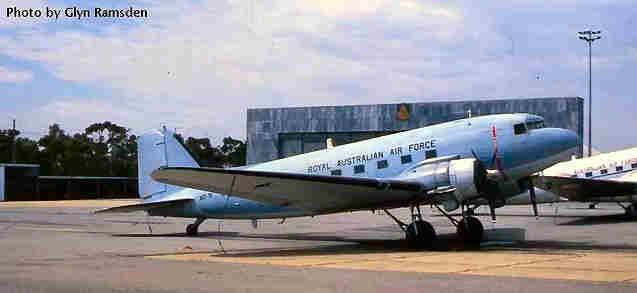
.jpg)
.jpg) other to the open plains. With VIP’s the preference is to take off in
directions other than towards mountains. That day there was a howling gale
from the mountains, but still the BAC-111 took off with the wind. If the
take-off airspeed is say 100 knots and the tail wind is 70 knots, then
that aircraft really has to motor down the runway. Better to run off the
end of the runway than to bang into the hills???? Is that their thinking??
other to the open plains. With VIP’s the preference is to take off in
directions other than towards mountains. That day there was a howling gale
from the mountains, but still the BAC-111 took off with the wind. If the
take-off airspeed is say 100 knots and the tail wind is 70 knots, then
that aircraft really has to motor down the runway. Better to run off the
end of the runway than to bang into the hills???? Is that their thinking??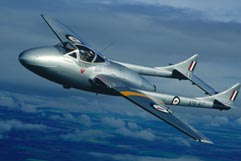
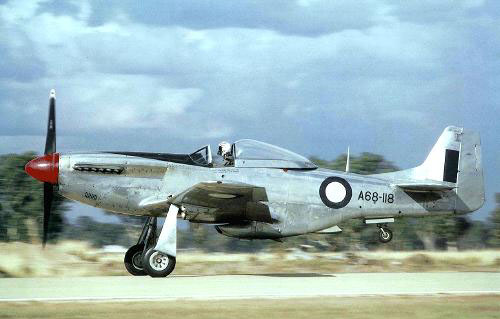 Another
pilot I flew with was Jeff Trappett. He was a sprog then but became well
known as an instructor at east Sale and a member of the aerobatic team
there. Jeff also flew F-111’s. After he left the RAAF he flew his own
restored Mustang. Jeff apparently now flies 747’s for Qantas. Once on a
flight to Tasmania Jeff saw a ship below and decided to dive on it in a
Gooney. As he went for the throttles, he was quickly slapped across the
hand by Flash Blair sitting in the right-hand seat. We maintained our
decorum.
Another
pilot I flew with was Jeff Trappett. He was a sprog then but became well
known as an instructor at east Sale and a member of the aerobatic team
there. Jeff also flew F-111’s. After he left the RAAF he flew his own
restored Mustang. Jeff apparently now flies 747’s for Qantas. Once on a
flight to Tasmania Jeff saw a ship below and decided to dive on it in a
Gooney. As he went for the throttles, he was quickly slapped across the
hand by Flash Blair sitting in the right-hand seat. We maintained our
decorum. 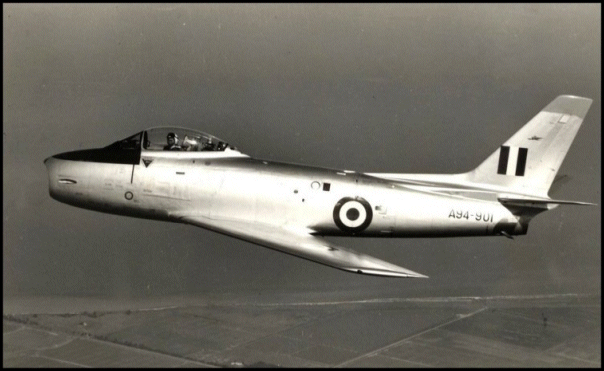 get a bird strike on take off one Saturday morning and finished up against
the fence at Laverton, wheels up. When I was doing my check out because I
was leaving the RAAF, Dick looked at me with disbelief on his face. How
could anyone leave the RAAF? Maybe he was right. I had married a Sydney
girl in July 1965. She was a teacher with a BA, Dip.Ed and found herself
working at Werribee High School. It upset her because Victoria, unlike
NSW, did not grant equal pay to women. She hated me flying and so I did
not tell her what I was doing from day to day. On my first job, a trip to
Edinburgh, I had to psyc her up. We took off, in guess which aircraft, yes
A65-95. The batteries boiled, releasing poisonous gas into the cabin. We
did a short landing with 2 fire trucks racing down the strip alongside the
plane. Stop, doors open, jump and run. When I turned up home and told her
I would be going again the following day, she was not impressed.
get a bird strike on take off one Saturday morning and finished up against
the fence at Laverton, wheels up. When I was doing my check out because I
was leaving the RAAF, Dick looked at me with disbelief on his face. How
could anyone leave the RAAF? Maybe he was right. I had married a Sydney
girl in July 1965. She was a teacher with a BA, Dip.Ed and found herself
working at Werribee High School. It upset her because Victoria, unlike
NSW, did not grant equal pay to women. She hated me flying and so I did
not tell her what I was doing from day to day. On my first job, a trip to
Edinburgh, I had to psyc her up. We took off, in guess which aircraft, yes
A65-95. The batteries boiled, releasing poisonous gas into the cabin. We
did a short landing with 2 fire trucks racing down the strip alongside the
plane. Stop, doors open, jump and run. When I turned up home and told her
I would be going again the following day, she was not impressed. 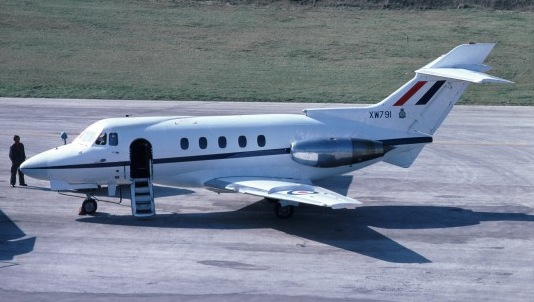 example
‘Hotel Juliet Tango (one of ours), clear land, check wheels’. At Avalon a
pilot of a Hawker Siddeley HS125 failed to do just that and performed a
very expensive landing. They say any landing you can walk away from is a
good landing, not sure about that. On a job to Richmond we had a
hitch-hiker, a Sqd Ldr pilot who insisted on flying the plane. Richmond
with its one runway had a severe cross wind that day. The man insisted on
landing the plane. I finished up with teeth marks on my heart as we went
sideways down and across the strip and almost on to the grass. Later on
that job I found myself with an ARDU ground crew on the runway threshold
using a theodolite to track our plane on base finals. The idea was to
calibrate the glide slope for the tower controllers. Gooneys look awfully
big just going over your head.
example
‘Hotel Juliet Tango (one of ours), clear land, check wheels’. At Avalon a
pilot of a Hawker Siddeley HS125 failed to do just that and performed a
very expensive landing. They say any landing you can walk away from is a
good landing, not sure about that. On a job to Richmond we had a
hitch-hiker, a Sqd Ldr pilot who insisted on flying the plane. Richmond
with its one runway had a severe cross wind that day. The man insisted on
landing the plane. I finished up with teeth marks on my heart as we went
sideways down and across the strip and almost on to the grass. Later on
that job I found myself with an ARDU ground crew on the runway threshold
using a theodolite to track our plane on base finals. The idea was to
calibrate the glide slope for the tower controllers. Gooneys look awfully
big just going over your head. 50’s or even late 40’s, the RAAF got hold of the original semi-conductor
transistors for appraisal, well before the ubiquitous OC45, 71 etc…The
devices had 3 leads and a label ‘crystal triode’. I pinched a couple and
later when I was doing research in the Physics labs of Macquarie
University, lent them to Professor Peter Mason. He never gave them back!
Sadly, Peter Mason, a wonderful communicator and teacher, was to die of a
brain tumour.
50’s or even late 40’s, the RAAF got hold of the original semi-conductor
transistors for appraisal, well before the ubiquitous OC45, 71 etc…The
devices had 3 leads and a label ‘crystal triode’. I pinched a couple and
later when I was doing research in the Physics labs of Macquarie
University, lent them to Professor Peter Mason. He never gave them back!
Sadly, Peter Mason, a wonderful communicator and teacher, was to die of a
brain tumour.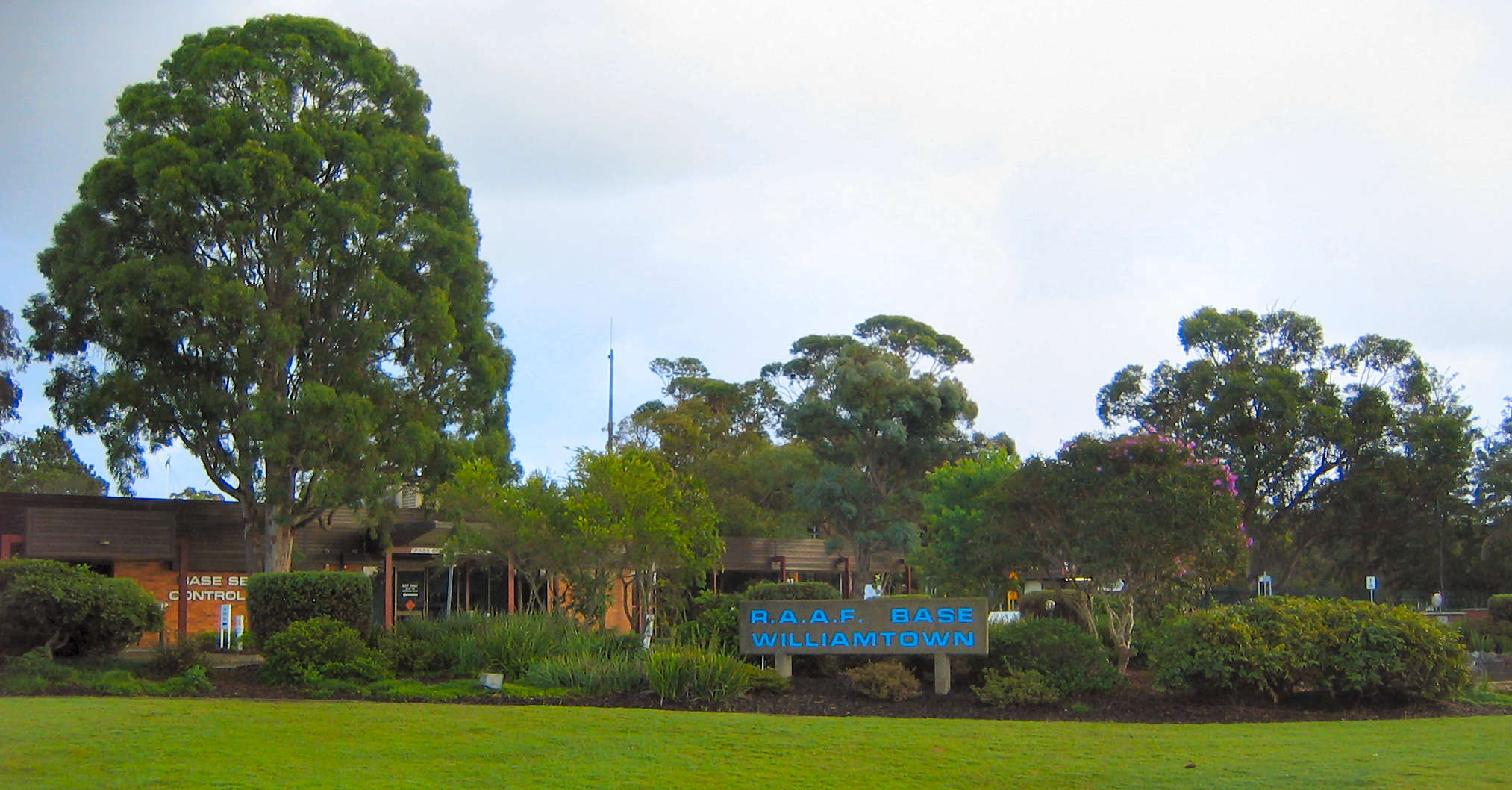 stores depot at Dubbo. What an amazing place! Bits of aeroplanes stores,
Rolls Royce Merlin engines still in packing grease in unopened boxes, bits
of everything, a real museum in some ways. They had what was called a
‘gifto’ for visitors and I scored some silk maps dated 1944, of the SE
Asia region, including China. These maps were carried by aircrew and would
not be ruined in water. There were buttons and belt buckles designed as
compasses to assist in POW escapes.
stores depot at Dubbo. What an amazing place! Bits of aeroplanes stores,
Rolls Royce Merlin engines still in packing grease in unopened boxes, bits
of everything, a real museum in some ways. They had what was called a
‘gifto’ for visitors and I scored some silk maps dated 1944, of the SE
Asia region, including China. These maps were carried by aircrew and would
not be ruined in water. There were buttons and belt buckles designed as
compasses to assist in POW escapes.